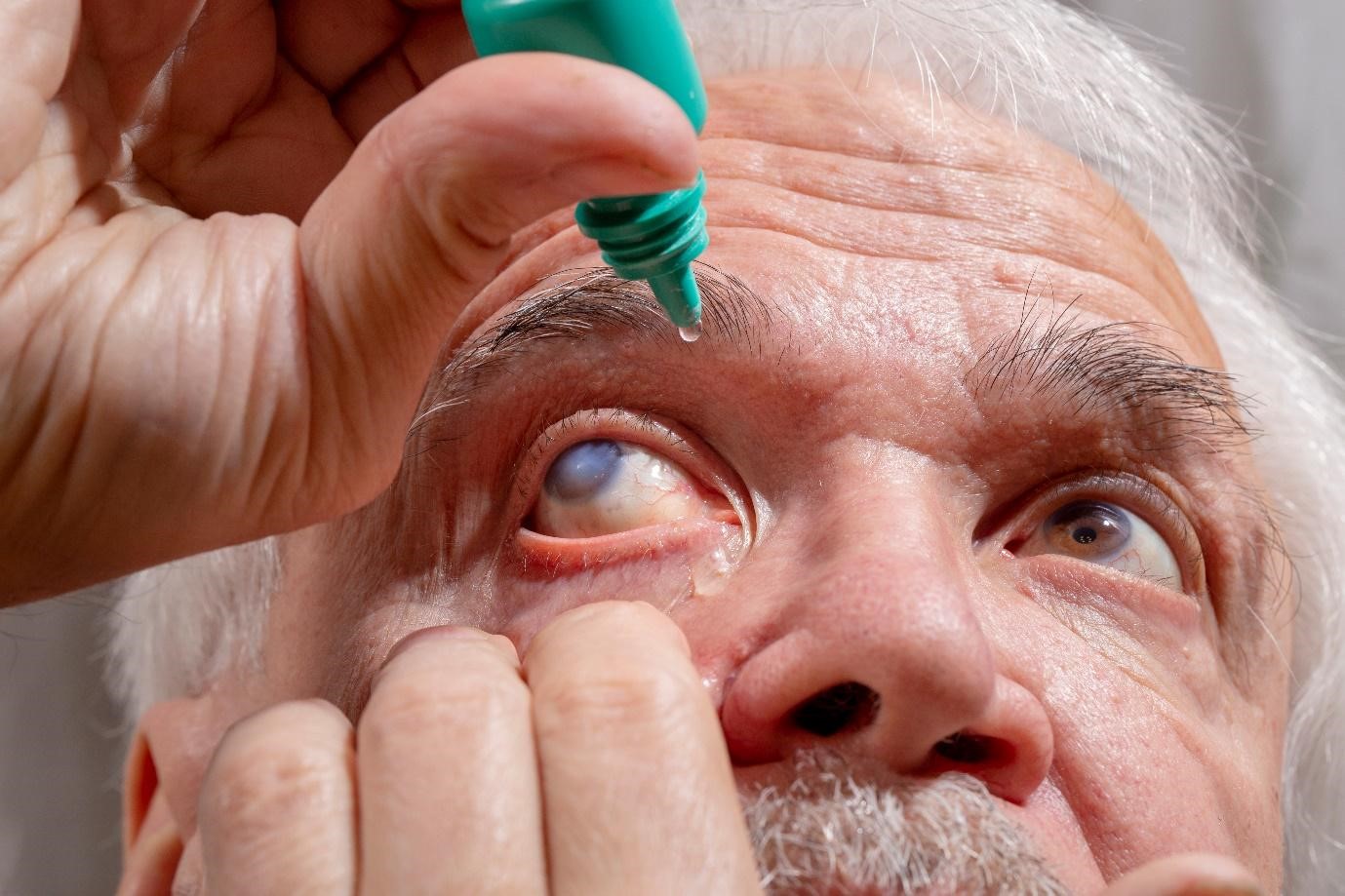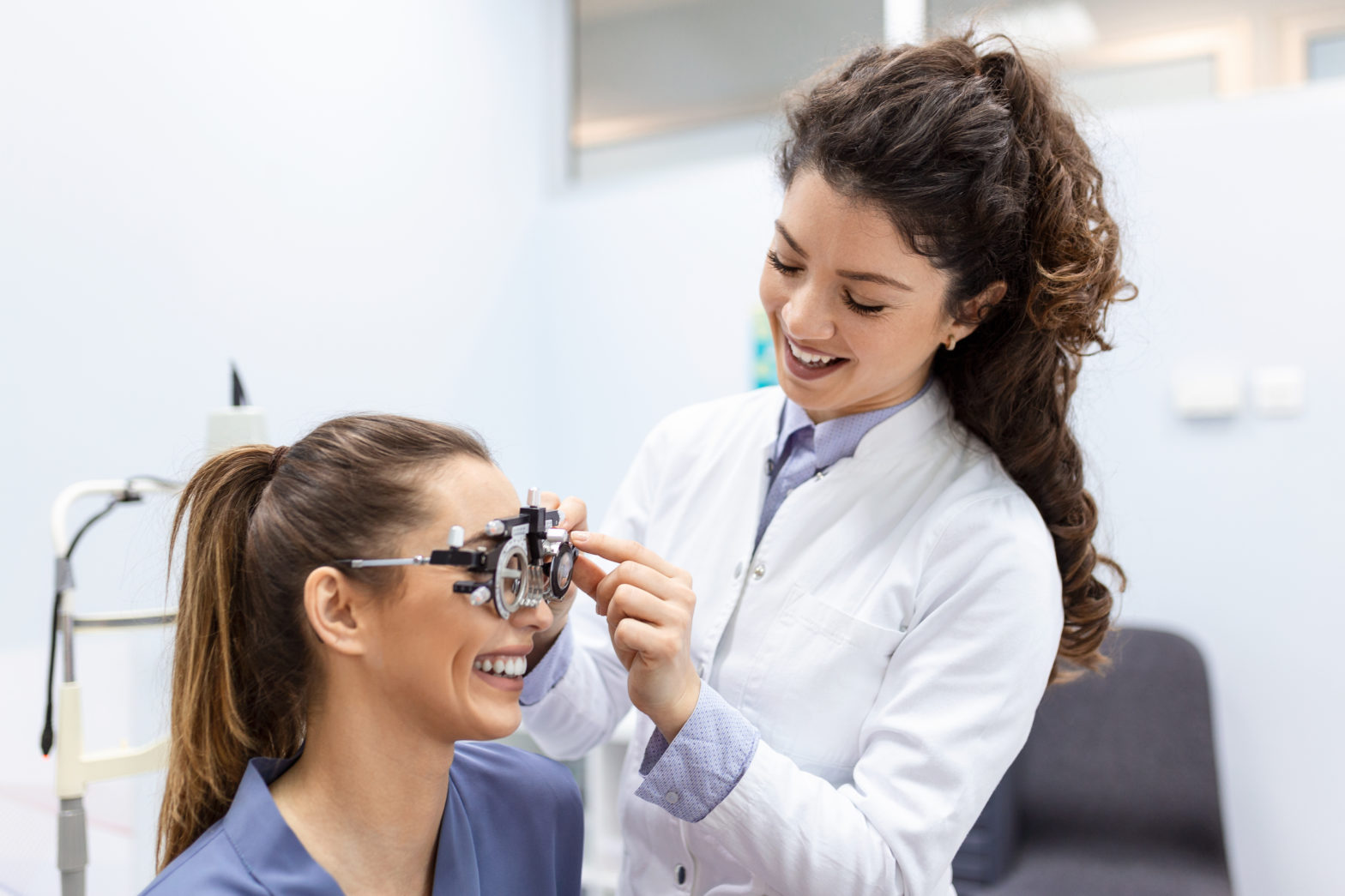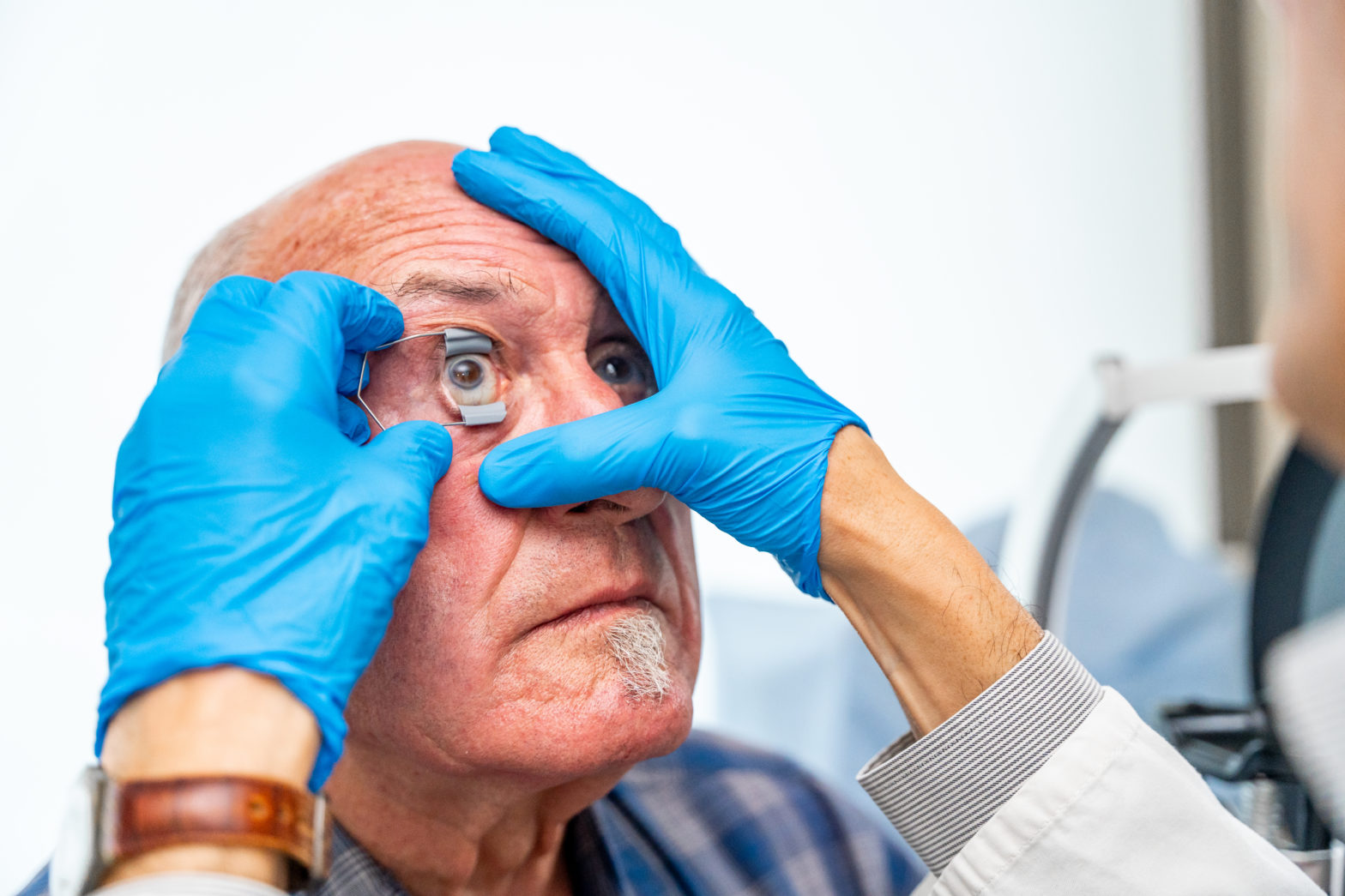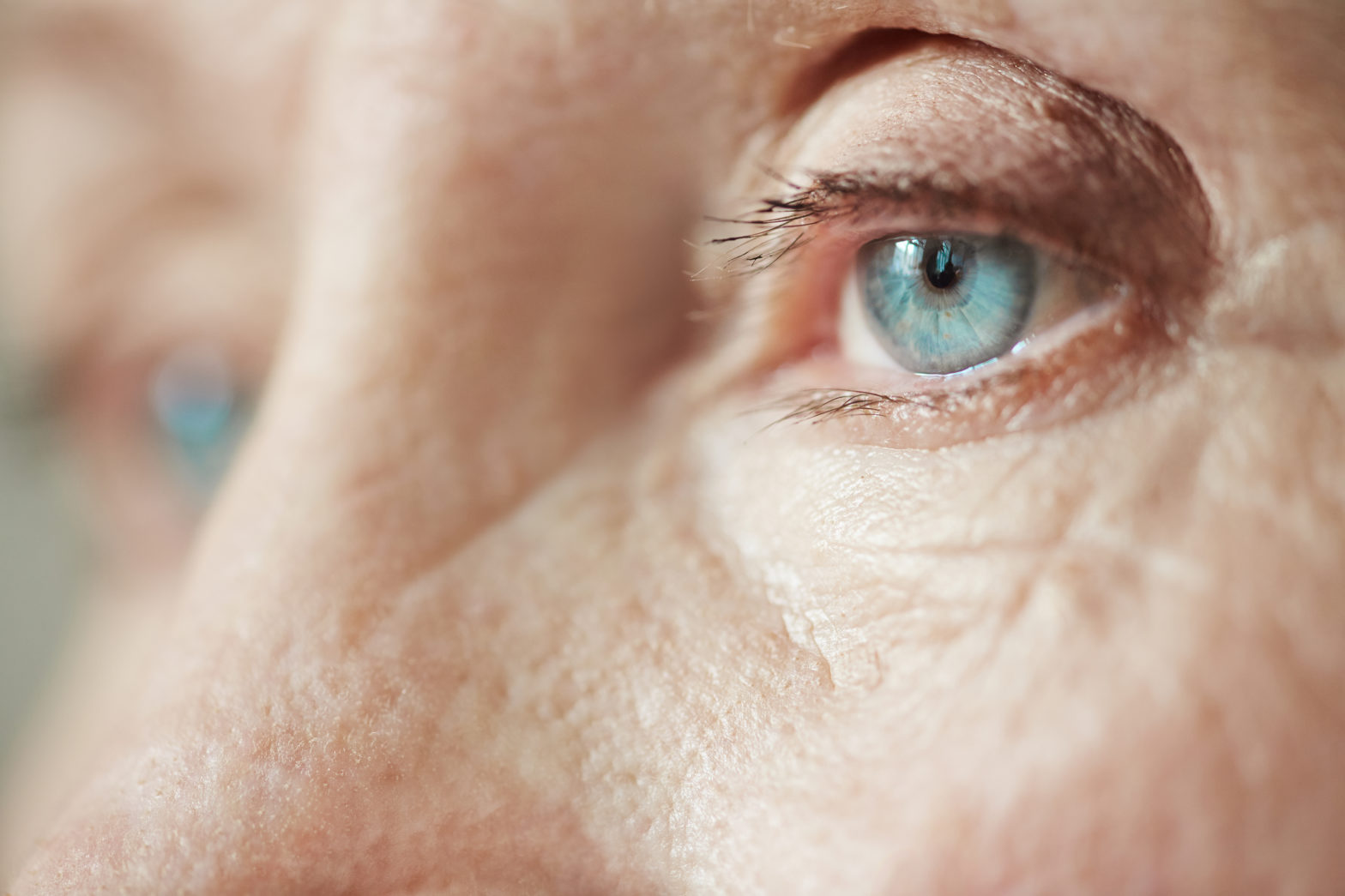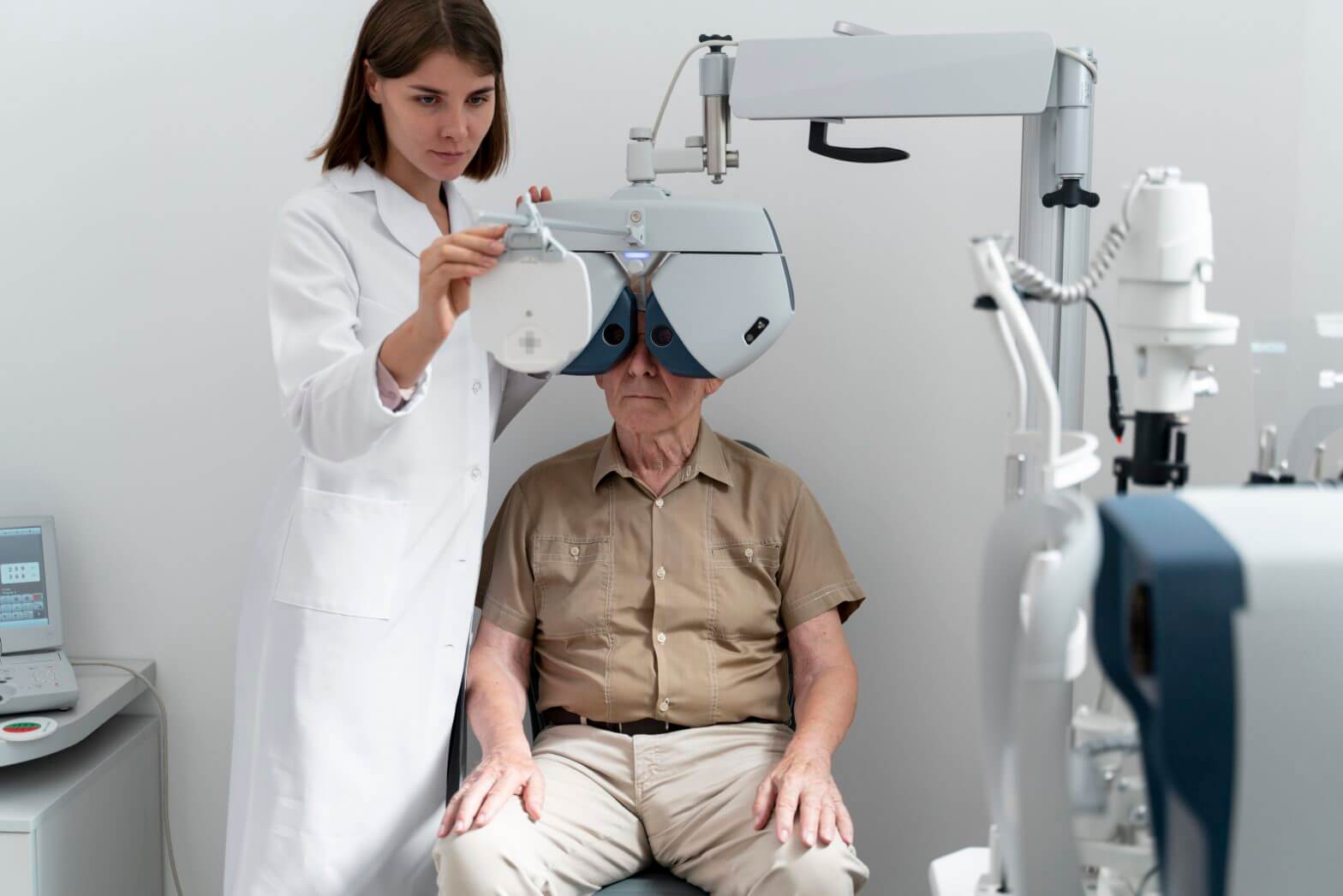Glaucoma is a disease that directly affects the optic nerve in the eyes; optic nerves send information to the brain through your eyes. There are various types of glaucoma, and with the right treatment, they can be treated. But, if proper treatment is not provided at the right time, glaucoma can cause permanent vision loss.

Symptoms of Glaucoma
Here are some general symptoms of glaucoma. However, different types of glaucoma sometimes have other symptoms.
-
Nauseous feeling
-
Constant headache
-
Pain in the eyes
-
Discoloration of the eyes (Red)
-
Blurred vision
-
Seeing rainbow-like rings
-
Discomfort in the eyes
-
Constant irritation and itching in the eyes
Causes of Glaucoma
A fluid named aqueous humor is generated at the back of the eyes. The fluid is then spread evenly to the front of the eyes through the iris and cornea. When this process is hampered due to any blockage or obstruction, there is a pressure caused to the eye called intraocular pressure (IOP). The optic nerves get damaged when the intraocular pressure increases, causing glaucoma. Some other causes include:
-
Reaction to medications
-
Blood flow issues
-
High blood pressure (BP)
-
Eye drops for dilating
Types of Glaucoma
-
Open Angle Glaucoma (Chronic)
In this type of glaucoma, the initial symptoms are not as evident, making them easy to miss. After the condition has grown, vision loss starts to take place gradually. The damage has already been done in this, so the treatments are longer than usual. Open-angle glaucoma is one of the most common types of glaucoma.
-
Closed Angle Glaucoma (Acute)
Closed-angle glaucoma is an emergency; when the aqueous humor fluid is blocked suddenly, the fluid present gets collected at the back of the eye. This causes instant pressure on the eyes, resulting in severe headaches and blurred vision.
-
Congenital Glaucoma
Congenital Glaucoma is one of the types of glaucoma which is present from birth. The angle of the eye is faulty by birth, preventing the fluid’s normal drainage and causing congestion. This type of glaucoma can be inherited and run over generations.
-
Secondary Glaucoma
Secondary glaucoma is the name used to describe glaucomas that occur as a side effect or “secondary” to another underlying medical condition or trauma.
Causes of Secondary Glaucoma are
-
Steroid usage.
-
Diabetes
-
Inflammation of eye.
-
advances stages of cataract.
-
Trauma to eye
- Malignant Glaucoma
Another name for malignant glaucoma is aqueous misdirection syndrome. This is a type of glaucoma that is extremely rare but creates an emergency and needs to be treated accordingly. Most people with a history of closed/angle glaucoma are prone to catching malignant glaucoma.
Fact: Glaucoma can be developed in anyone if excess pressure is caused to the eyes.
Diagnosis of Glaucoma
To diagnose glaucoma, an extensive eye examination needs to take place—the ophthalmologist checks for the signs of wrecked nerves and tissues. Before the tests, a thorough medical history must be shared with the doctor, including all the past conditions and general health updates. This will help the doctor better understand the condition and practice the diagnosis accordingly. Here is a list of a few tests to determine the condition.
-
Tonometry Test
The internal pressure of the eye is checked through this test.
-
Pachymetry Test
This test is performed to check the thickness of the cornea, as people with sleek/thin cornea are prone to glaucoma.
-
Monitor Optic Nerve
If your doctor wants to monitor for gradual changes to your optic nerve, they may take photographs of your optic nerve to conduct a side-by-side comparison over time.
-
Perimetry Test
Another name for a perimetry test is a visual field test. By this test, the ophthalmologist can determine the intensity of glaucoma and if it’s affecting your eyesight or not.
Treatment of Glaucoma
The treatment of glaucoma ensures the reduction of intraocular pressure from the eyes to prevent any further eyesight loss. For the initial stages, eye drops/ointments are recommended, for later stages, other treatments might come into play.
-
Medicines
Various medicines are invented for the reduction of IOP levels; eye drops, eye ointments, and oral medications are used as prescribed by the doctor.
-
Surgery
When the blockage caused in the eyes increases the IOP and the eye drops don’t work, surgery is suggested by the doctors to create a proper drainage passage for the fluid.
Unlike other types of glaucoma, angle-closure glaucoma needs to be treated differently since it needs immediate attention. The pressure created is too much and needs to be reduced immediately to ensure vision loss doesn’t occur.
Treatment of Glaucoma at Dr. Agarwal’s Eye Hospital
We at Dr. Agarwal’s Eye Hospital are a team of ophthalmologists with decades of experience in this field. Our clinics are spread countrywide and outside India too. The ophthalmological equipment we use is high quality to ensure we provide the best treatment to our patients. The appointments are thorough, and our services are cost-effective.
Explore our website and book an appointment with us today.
